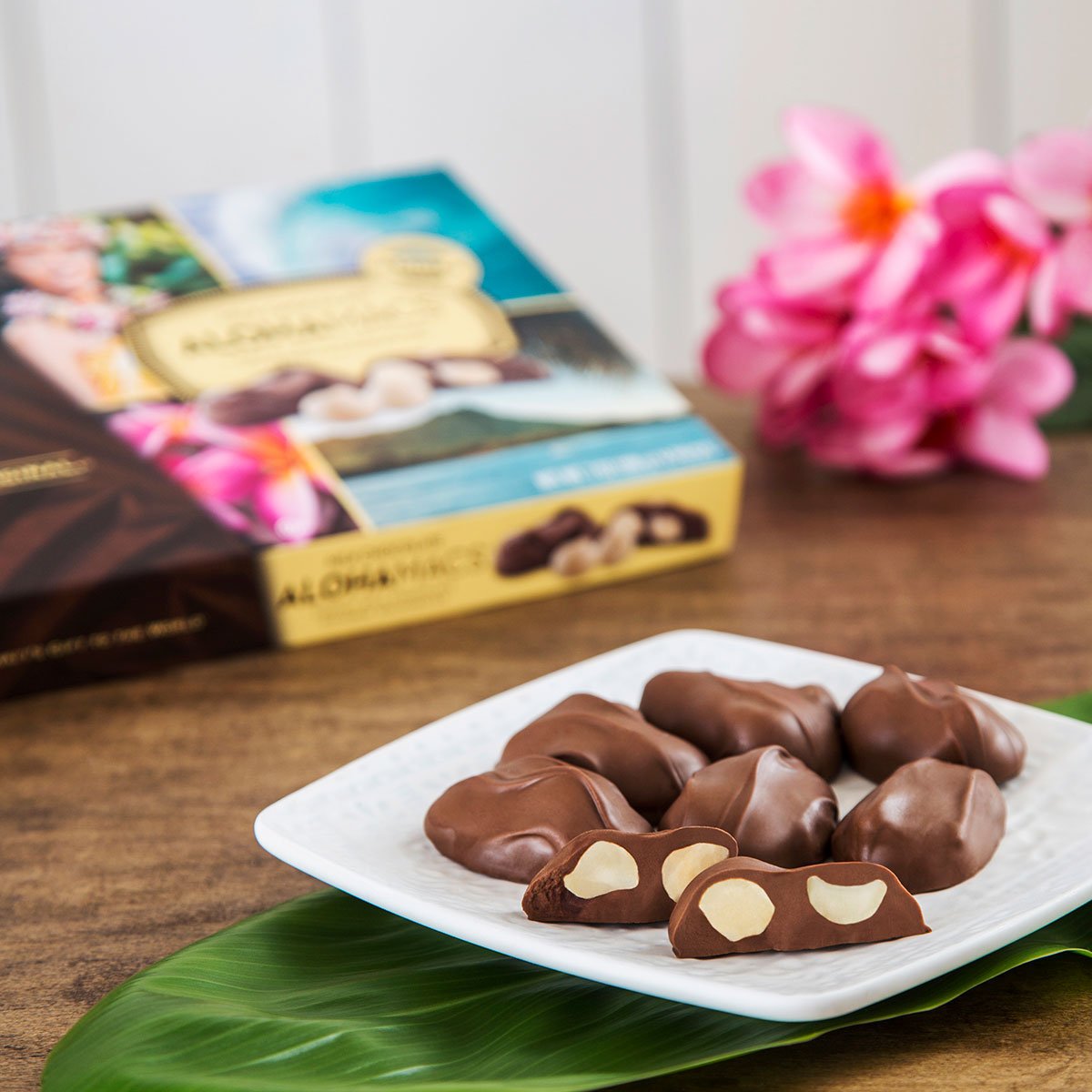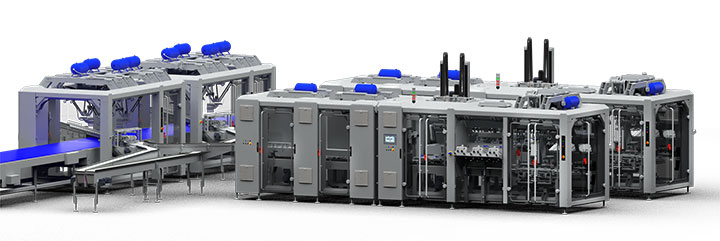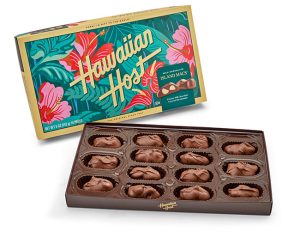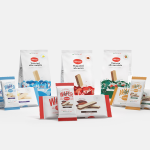
Multi-variable packaging lines can be hard work to design, develop and eventually control, but Cama’s domain experience and high-tech solutions are more than up to the task.
Naked chocolate products, three shapes, 15 packaging counts, 17 packaging formats, five SKU styles and 1,500 ppm throughput! Just two of these variables are enough to put most ‘normal’ packaging companies off, but when you’re Cama Group, these six are all in a day’s work! The customer in this case is Hawaiian Host, a leading North American confectionary company, which can trace its roots nearly 100 years ago in the founder’s parents’ attic on the island of Maui. Hawaiian Host is the “original chocolate-covered macadamia” claims the company, which is also the largest manufacturer of chocolate-covered macadamias in the world.
Brand reflection
It goes on to explain that its products are associated with the Japanese word ‘omiyage’, meaning: a thoughtful souvenir from paradise to gift to friends and family. And it is for this reason, among many others, that the packaging has to reflect and support the company’s brand, the gift giver’s intentions and the receiver’s high expectations. It has to be special. It has to be Cama!“We first met the company five years ago at PackExpo,” explains Alessandro Rocca, Group Sales Director at Cama Group. “They came onto our booth, holding a tray of chocolates and asked: ‘do you have a robot that can pack this?’

Huge line, massive variety
Following extensive design efforts and client consultations, we secured an order for a substantial line capable of packing over 1,500 chocolates per minute with precision, care, and a variety of packaging formats. The turnkey line developed by Cama is highly specialized and tailored specifically to meet the demands of this unique packaging task. During operation, robots equipped with Gimatic grippers pick up bare chocolates from feeding rows on a conveyor and delicately place them into PET trays delivered in parallel from a de-nester. The quality, shape, and position of the chocolates on the belt are assessed using a special 3D laser scanner from Univision. Once each tray is filled, they are loaded individually or in pairs (with a cushioning sheet) into a carton tray, followed by the formation and tucking of a lid into the tray, resulting in a completed box that contains anywhere from four to 32 chocolates. The boxes are then processed through an X-ray machine and check weigher before being directed to a case packer at the line’s end.
Reducing downtime
 The line is also capable of bulk packaging, which is also used as a fall back in case of any line issues. In this instance carton sheets can be fed through the line and the delta robots can directly load chocolates into the carton, these are then passed onto a manual loading section requested by the customer. This approach prevents any significant downtime. “The confectionary industry demands optimum efficiency,” Rocca explains. “You can’t just stop a 1,500 ppm line! Our adage is: ‘never stop the line unnecessarily and be as efficient as possible when it is running.’ And this counts as double, as phase two of this project will see another line going in.” According to Chris Rabago, Director of Manufacturing at Hawaiian Host: “Cama established confidence with our team by taking a collaborative approach on finding the best solutions to our top-level priorities. Clear communication and collaboration was essential, as equipment projects have a high number of variables, and it’s critical that an open dialogue exist around cost/benefit solutions as well as build decisions that may impact the equipment capabilities in the future. In respect to the technology, we look for an intuitive user interface, simple changeovers, and remote service support, which is especially important to our Hawaii-based production facilities, as it is often a challenge to quickly bring technicians onsite.”
The line is also capable of bulk packaging, which is also used as a fall back in case of any line issues. In this instance carton sheets can be fed through the line and the delta robots can directly load chocolates into the carton, these are then passed onto a manual loading section requested by the customer. This approach prevents any significant downtime. “The confectionary industry demands optimum efficiency,” Rocca explains. “You can’t just stop a 1,500 ppm line! Our adage is: ‘never stop the line unnecessarily and be as efficient as possible when it is running.’ And this counts as double, as phase two of this project will see another line going in.” According to Chris Rabago, Director of Manufacturing at Hawaiian Host: “Cama established confidence with our team by taking a collaborative approach on finding the best solutions to our top-level priorities. Clear communication and collaboration was essential, as equipment projects have a high number of variables, and it’s critical that an open dialogue exist around cost/benefit solutions as well as build decisions that may impact the equipment capabilities in the future. In respect to the technology, we look for an intuitive user interface, simple changeovers, and remote service support, which is especially important to our Hawaii-based production facilities, as it is often a challenge to quickly bring technicians onsite.”
The only way is digital
 The variables in this solution demand a digitalized solution, which Cama has perfected over the last five years. “This line benefits from our full Industry 4.0 offering and is one of the first to deploy our new AI-driven line supervisor software,” Rocca tells us. “And to keep uptime to an absolute maximum, it exploits our ‘toolless’ RFID-managed changeover solution and an automated gripper system, both of which help deliver some of the fastest batch-swap routines in the industry.” The digitalized approach also makes operator training, machine interactions and maintenance routines simpler, thanks to immersive augmented reality (AR). All operational parameters are collected, collated and disbursed using a centralised PC, which can share instructions and alarms to tablets, the PC also monitor energy consumption as part of a sustainability package, which is also supported by the machines ability to handle and package trays made from sustainable materials.
The variables in this solution demand a digitalized solution, which Cama has perfected over the last five years. “This line benefits from our full Industry 4.0 offering and is one of the first to deploy our new AI-driven line supervisor software,” Rocca tells us. “And to keep uptime to an absolute maximum, it exploits our ‘toolless’ RFID-managed changeover solution and an automated gripper system, both of which help deliver some of the fastest batch-swap routines in the industry.” The digitalized approach also makes operator training, machine interactions and maintenance routines simpler, thanks to immersive augmented reality (AR). All operational parameters are collected, collated and disbursed using a centralised PC, which can share instructions and alarms to tablets, the PC also monitor energy consumption as part of a sustainability package, which is also supported by the machines ability to handle and package trays made from sustainable materials.
“This is a fantastic deployment of our entire package,” Rocca concludes, “from mechanical design, through advanced electromechanical automation solutions from Rockwell Automation and onto AR and AI to deliver even greater efficiencies and ease of use. As I mentioned earlier, the confectionary industry demands maximum efficiency and, as solutions provider, we have to make sure that none of our technology is a weak link in what is a much bigger process. In fact, in the majority of applications our machines tend to be governed by up and downstream processes. It is our goal to never limit line speed in any industry.”






